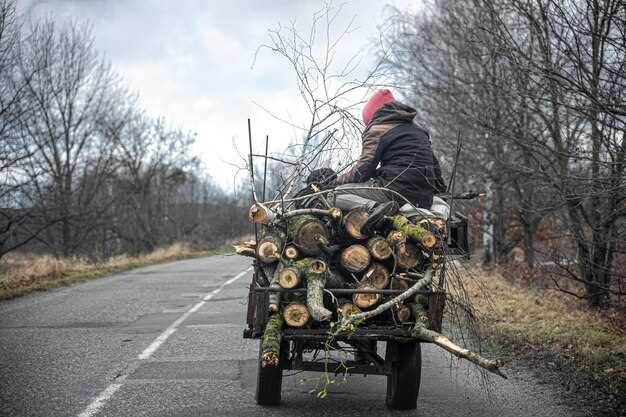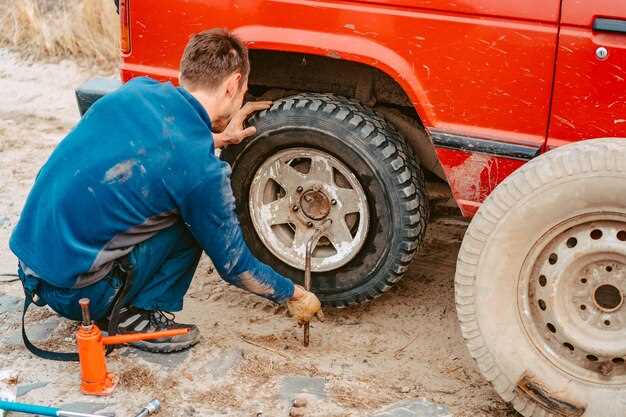
When venturing into the great outdoors, especially on rugged terrains, having the right gear is essential for ensuring safety and success. One of the most critical tools for off-road adventurers is a high-quality winch. Whether you’re navigating through mud, sand, or steep inclines, a reliable winch can mean the difference between getting stuck and continuing your journey.
In this article, we will explore the top truck winches designed specifically for off-road recovery needs. With various options available on the market, it is vital to choose a winch that combines strength, durability, and ease of use. We will delve into the features that make these winches standout, their load capacities, and the technologies that enhance their performance in challenging conditions.
From electric to hydraulic options, each winch type offers unique benefits tailored to different recovery scenarios. We will also discuss factors to consider when selecting a winch, ensuring you find the perfect fit for your vehicle and off-road adventures. Get ready to equip yourself with the knowledge needed to make an informed decision and enhance your off-road recovery toolkit.
Choosing the Right Winch Capacity for Your Truck
When selecting a winch for off-road recovery, determining the appropriate capacity is crucial for effective performance and safety. The winch capacity, often measured in pounds or kilograms, plays a significant role in ensuring you can handle various recovery scenarios. Here’s how to choose the right winch capacity for your truck.
1. Understand Your Vehicle’s Weight
The first step is to know your truck’s gross vehicle weight (GVW). This includes the weight of the truck and any additional cargo. Typically, your winch should have a pulling capacity that exceeds your truck’s GVW by a safety margin. A recommended guideline is to select a winch that has at least 1.5 times your truck’s weight.
- If your truck weighs 5,000 lbs, aim for a winch with a capacity of at least 7,500 lbs.
- For heavier vehicles, adjust accordingly to maintain the 1.5x safety margin.
2. Consider Load Variations
Recovery scenarios can vary greatly. Factors to consider include:
- Terrain: Soft ground may require more pulling power due to sinkage.
- Obstacles: Recoveries involving inclines or declines can affect pull dynamics.
- Weather Conditions: Mud or snow can make recoveries more challenging.
3. Select Winch Type
Winches come in different varieties, such as electric and hydraulic. Electric winches are popular for off-road vehicles due to their ease of installation and use. Make sure the winch capacity suits the demands of your truck and usage type.
4. Review Winch Accessories
Additional accessories can enhance recovery efforts. Consider the following:
- Snatch Blocks: These can effectively double the winch’s capacity, providing extra leverage.
- Straps and Chains: Ensure they are rated for the load to prevent failures during recovery.
5. Future Considerations
Anticipate potential upgrades to your truck that may increase its weight. It’s wise to choose a winch that accommodates these future changes, ensuring longevity and reliability.
By carefully assessing your truck’s weight, recovery scenarios, and selecting the right accessories, you can choose an appropriate winch capacity that ensures efficient and safe recovery operations in various conditions.
Electric vs. Hydraulic Winches: Which is Better for Off-Roading?

When choosing between electric and hydraulic winches for off-roading, both have their advantages and disadvantages. Electric winches are known for their ease of use and installation. They typically come with straightforward wiring setups, making them user-friendly for those who may not have extensive mechanical knowledge. Additionally, electric winches offer the benefit of being lightweight, which is advantageous for vehicles that prioritize weight distribution.
On the other hand, hydraulic winches provide superior power and reliability, especially for heavy-duty applications. They operate using the vehicle’s hydraulic system, meaning they can pull heavier loads without the risk of overheating, which is a common issue with electric winches during prolonged use. Hydraulic winches are also more durable, as they are less affected by environmental factors such as mud, water, and debris.
Electric winches generally excel in versatility and are suitable for a variety of off-road situations, from casual recovery tasks to more demanding scenarios. However, they require a reliable power source and can drain the vehicle’s battery if used extensively without recharging. In contrast, hydraulic winches are better suited for extreme conditions where maximum pulling power is essential, but they can be more complex to install and maintain due to the hydraulic lines and additional components needed.
Ultimately, the choice between electric and hydraulic winches depends on your specific off-road needs. For casual off-roading and lighter recoveries, an electric winch may be sufficient. However, for heavy-duty applications requiring consistent power and durability, a hydraulic winch could be the better option, providing enhanced performance in challenging environments.
Key Features to Look for in an Off-Road Winch
When selecting an off-road winch, several essential features should be considered to ensure optimal performance and reliability in recovery situations.
- Weight Capacity: Choose a winch with a pulling capacity that exceeds the weight of your vehicle. A general rule is to select a winch that can pull at least 1.5 times the vehicle’s weight.
- Type of Winch: There are two main types: electric and hydraulic. Electric winches are more common due to easier installation and operation, while hydraulic winches provide more power and are ideal for heavy-duty applications.
- Gear Ratio: The gear ratio impacts the speed and power of the winch. A lower gear ratio provides more pulling power but less speed, while a higher ratio allows for faster retrieval, making it crucial to find a balance based on your needs.
- Motor Power: A strong motor is vital for reliable operation. Look for winches with at least a 4-5 HP motor for effective performance in rugged environments.
- Line Type: Synthetic rope is lightweight and safer, reducing the risk of recoil during a snap, while steel cable is durable and abrasion-resistant. Choose based on your specific off-road conditions.
- Remote Control: A wireless remote control offers convenience and safety, allowing the operator to maintain a safe distance during recovery efforts.
- Brake System: A dynamic brake or a mechanical brake ensures safe and controlled pulling. Look for models with reliable braking systems to prevent accidents.
- Durability: Off-road winches should be weatherproof and resistant to dust and moisture. Consider models with IP ratings that indicate high resistance to elements.
- Mounting Options: Ensure compatibility with your vehicle by checking the winch’s mounting options and fitment. Many winches come with various mounting brackets for versatility.
- Warranty: A solid warranty is crucial. It reflects the manufacturer’s confidence in the product and provides peace of mind in case of defects or issues.
By focusing on these key features, you can select an off-road winch that meets your recovery needs effectively and ensures safety during your adventures.
Best Winch Brands for Reliability and Performance
When it comes to off-road recovery, having a reliable winch is crucial. Below are some of the top brands known for their performance and reliability in the winch market.
| Brand | Key Features | Strengths | Typical Applications |
|---|---|---|---|
| Warn | Steel and synthetic ropes, durable construction | Industry leader, extensive range of load capacities | Off-road vehicles, trucks, ATVs |
| Champion | High torque, wireless remote, portable options | Great value for performance, compact designs | Light trucks, SUVs, recreational vehicles |
| Smittybilt | Heavy-duty construction, waterproof features | Affordable pricing, powerful winches | Off-road trips, recovery tasks |
| Superwinch | Robust design, powerful gear train, reliable motor | Long history in the industry, dependable options | ATVs, trucks, racing applications |
| Ramsey Winch | Variety of winch mounts, heavy-duty options | Excellent durability, strong pulling force | Industrial, towing applications |
Each of these brands offers a combination of reliability, performance, and specific features catering to different off-road recovery needs. Selecting the right winch brand is essential for ensuring successful recoveries in challenging conditions.
Installation Tips for Maximizing Winch Effectiveness
Choosing the right location for your winch is crucial. Install it at a height that allows for adequate clearance from the ground while still being easily accessible. This positioning prevents potential damage from rocks or debris during off-road activities.
Ensure that the mounting plate is securely attached to the frame of your vehicle. Use high-strength bolts and a reinforced mounting plate to withstand the stresses that come during winching operations. Verify that the winch is mounted in a way that allows for optimal cable alignment.
Pay attention to the wiring setup. Use heavy-gauge wiring that is appropriate for your winch’s power requirements. This minimizes voltage drop and maximizes performance. Additionally, ensure that the connections are clean, tight, and protected from moisture and dirt to prevent corrosion.
Install a dedicated battery for your winch or ensure that your vehicle’s primary battery is up to the task. A battery with a higher amp-hour rating can deliver the necessary power for sustained winching without draining quickly. Consider using a dual battery system to provide additional power when needed.
Incorporate a winch solenoid or contactor that’s rated for the voltage and current of your winch. This component helps in managing the electrical flow and enhancing the reliability of your winch operation.
Before using the winch, practice spooling in and out to ensure smooth operation. Pay attention to the wire rope or synthetic line; it should be wound evenly on the drum to prevent tangles and potential damage during use.
Finally, always check the manufacturer’s guidelines for specific installation instructions and requirements. Adhering to these recommendations ensures that your winch operates effectively and safely while maximizing its recovery potential in off-road situations.
Safety Practices When Using Your Off-Road Winch
When operating an off-road winch, safety must be the top priority to prevent accidents and injuries. Begin by thoroughly reviewing the winch’s owner manual to understand its specifications, limitations, and proper usage techniques.
Before each use, inspect the winch and all associated equipment. Check for frayed cables, worn-out components, and secure mounting. Ensure that the winch is appropriately rated for the weight of the vehicle or object being recovered.
Always wear suitable personal protective equipment (PPE). This may include gloves, goggles, and steel-toed boots to safeguard against sharp objects and potential hazards during operation.
Establish a safe working area and communicate effectively with your team. Before engaging the winch, ensure everyone is at a safe distance, typically at least 50 feet away from the winching area. This distance helps to prevent injuries from recoiling cables or debris.
Use a winch dampener or blanket over the cable during operation. This practice helps to absorb energy in the event of a cable snap, minimizing the risk of injury from flying parts.
Be cautious about the angle and direction of pulling. Winching at sharp angles can increase the risk of cable breakage. Always try to pull in a straight line and avoid wrapping the cable around any obstacles.
Engage the winch slowly and steadily. Avoid sudden jerks or rapid movements, which can lead to equipment failure. Instead, maintain control and monitor the process closely.
Lastly, after a recovery operation, reevaluate the winch and its components thoroughly. Look for any signs of wear or damage and perform necessary maintenance to ensure the winch remains in safe working condition for future use.

